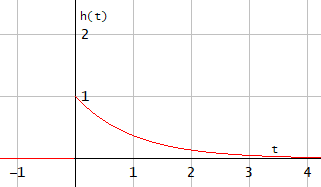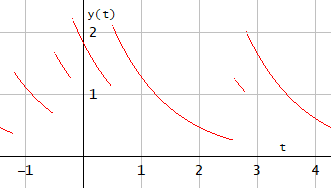This is an excellent series of questions, so I will have a go at part of it! I will start with an example from Verdeyen’s book (J. T. Verdeyen, Laser Electronics, Prentice-Hall, Inc., Englewood Cliffs, NJ, ©1981, Chapter 14). Assume $\lambda$ = 500 nm, quantum efficiency = 0.15, photomultiplier (PMT) gain = 1.68x$10^7$, transimpedance = 1 k$\Omega$ and RC= 100 $\mu$s. Assume $\Delta$t = 1 $\mu$s and the output of the RC LPF is sampled at the end of every 100 $\mu$s interval.
Start at the bottom: assume an average of 2 photons/$\mu$s arrive at the PMT’s photocathode. Then the average incident optical power is 0.795 pW, the average photocurrent is 806 nA and the TIA’s average output voltage is 0.806 mV. The first figure below shows the Mueller calculus simulation models, with the above assumptions. (It is deliberately simple, for present purposes, but can be made much more complicated and realistic if desired.)

The light source produces Stokes vectors at the rate of 1/$\mu$s, and the intensity is proportional to the number of photons in that $\mu$s interval. The detector and transimpedance preamplifier (TIA) converts the incident light intensities to photocurrents and then to voltages. The FFT PSD block shows (second figure) that the noise is white.

Then the RC LPF filters the TIA’s outputs and its outputs are sampled every 100 $\mu$s and also processed to yield a PSD (third figure). The TIA's PSD is the average of 1000 8k FFT PSDs, the RC LPF's PSD is the average of just 100 8k FFT PSDs (Fig. 1B shows the data collection only, but not the separate FFT PSD processing), and they are all unilateral and mean-subtracted.

The fourth figure shows the raw TIA output (green), the RC LPF output (cyan) and the sampled RC LPF output (red). The quantization at low photon flux is clearly shown in the TIA output

Increasing the photon flux to 20 photons/$\mu$s gives the results in the fifth figure. Now the quantization is not so bad and the signal-to-noise ratio is higher, as expected. Increasing the photon flux further makes it reasonable to replace the Poisson distribution with its ‘envelope’ Gaussian distribution (not shown here). Hope this helps a bit: there is FAR more that can be said!

Note: I have corrected the first three figures to be consistent with the 'sample calculation' values given several paragraphs below. I will go through and update everything as needed or necessary!
The software I use is ExtendSim (commercial simulation software from Imagine That, Inc.), augmented with my free LightStone libraries of blocks (with full commented source code for all blocks). It is easy to construct time-series after the S&H and find the variance: I have been playing with just that since I saw your comment. Now for the specific question you ask, if photon flux is constant, at 2 photons/$\mu$s (= 20 photons/10$\mu$s), then the distinction is in the measurement interval, $\tau$. For the former, $\tau$ = 1 $\mu$s, so the mean number of photons in the measurement interval, m, is 2. For the latter, $\tau$ = 10 $\mu$s, m = 20 = 2 photons/$\mu$s x 10 $\mu$s. If the simulation step size, $\Delta$t, is constant at 1 $\mu$s, then the average signal magnitude in the larger $\tau$ will be 20/2 times larger than in the smaller $\tau$. The unilateral PSD will also be directly proportional to m, so it will be 10 times larger as well. Hence the variance at the output of the RC LPF will be 10 times larger (to the extent that the digital RC LPF ‘honors’ the analog RC LPF’s 1/4RC noise bandwidth), so the standard deviation will be $10^{1/2}$ times larger. So the SNR, as signal magnitude/noise standard deviation, is $10^{1/2}$ times larger, as expected for shot noise. By the way, in my field, SNRs are not usually done as signal power/noise power.
I ran the sims for the cases of m = 2 (with $\Delta$t = 1 $\mu$s) and m = 20 (with $\Delta$t = 1 $\mu$s and also with $\Delta$t = 10 $\mu$s), sampling (via the S&H) every 100 $\mu$s to get time-series. Each sim ran from 0 to 0.1 s and the S&H was sampled every 100 $\mu$s. I collected 1000 values for each series and discarded the data for the first 500 $\mu$s, because an RC LPF settles to 1% in 4.605 time constants. So each series is 995 S&H values, collected at 100 $\mu$s intervals.
Results summary: For m = 2, $\Delta$t = 1 $\mu$s, and $\tau$ = 1 $\mu$s, the average = 0.000807 V and standard deviation = 0.0000399 V. For m = 20, $\Delta$t = 10 $\mu$s, and $\tau$ = 10 $\mu$s, the average = 0.00808 V and the standard deviation = 0.000406 V. For m = 20, $\Delta$t = 1 $\mu$s, and $\tau$ = 10 $\mu$s, the average = 0.00807 V and the standard deviation = 0.000130 V. Note that 0.000130 V/0.0000399 V = 3.258, which is approximately $10^{1/2}$. N.B.: the ‘volt' units are fictitious, of course, since this is just a simulation!
Sample calculation: The unilateral PSD, at the output of the TIA, is m photons x 2 x $(0.0004037 V/photon)^2$ x $\Delta$t. For m = 2, this yields 6.52 x $10^{-13}$ $V^2$/Hz. Then the variance at the output of the digital RC LPF (if the noise bandwidth was actually 1/4RC), would be 6.52 x $10^{-13}$ $V^2$/Hz x 1 x 1/400 $\mu$s = 1.63 x $10^{-9}$ $V^2$, so the standard deviation would be 4.04 x $10^{-5}$. This is close to the above 3.99 x $10^{-5}$ V. Hope this helps.
Added 5/14/2019: For m = 2, $\Delta$t = 1 $\mu$s, and $\tau$ = 1 $\mu$s, I collected 100 files of 8k each, neglecting the first 1 ms (i.e., 10 RC times constants, to generously allow for settling of the RC LPF). I did this for 10 kHz sampling of the S&H and again for 100 kHz sampling of the S&H. For the 10 kHz sampling, the average variance of the 100 8k time series was 1.628 x $10^{-9}$ V and the PSD is shown below:

From the first PSD, the rms value was 4.035 x $10^{-5}$ V. This is the same, to 4 digits, as the square root of the variance.
For the 100 kHz sampling, the average variance of the 100 8k time series was 1.632 x $10^{-9}$ V and the PSD is shown below:

From the second PSD, the rms value was 4.039 x $10^{-5}$ V. The square root of the variance was 4.040 x $10^{-5}$ V.











